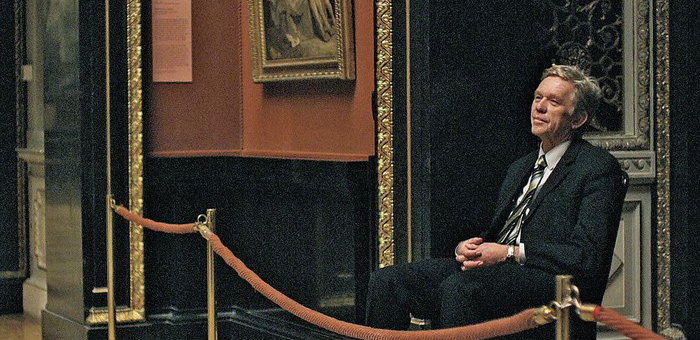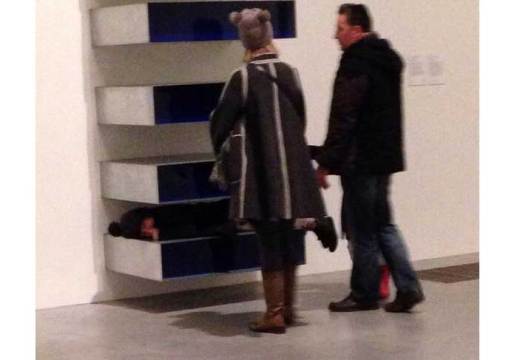This is an edited version of the Editor’s Letter from the forthcoming September issue of Apollo. Click here to subscribe.
On 11 August, the day that many National Gallery staff began an indefinite strike in protest at the privatisation of visitor and security services, a Guardian journalist posted a photograph of the museum’s floorplan. Five rooms had been circled in the main building, and perhaps two thirds of the galleries in the Sainsbury Wing. The rest of the plan had been crudely scribbled out: the great rooms of French, Spanish, British, Northern European paintings all closed for business, and not one artwork created since 1600 accessible to the public.
This was a sorry image, and one that encapsulates a sorry situation. Whether you side with the union or sympathise with the gallery, it is deeply sad to think that, at the time of writing in mid August, the nation’s flagship collection of historical paintings is all but barred to the visitors for whom it is held in trust. Weeks away from the new school year, the debacle threatens to disrupt the gallery’s strong programme of educational visits, too: precluding access to many young people who are otherwise unlikely to gravitate towards art history or its imaginative prospects.
So much has been written about the industrial action itself that I will not dwell on it here. One subplot of the whole affair, however, is how it has brought the role of the museum guard to public notice. For the noise made on the picket lines outside the gallery is in direct contrast to the silence guards typically maintain within its rooms; indeed, insofar as guards function to monitor visitor behaviour and worse, deter vandalism or theft, their day-to-day work entails a contradiction between the need for conspicuous presence and that for unobtrusiveness. Something has gone awry if museum guards become as noticeable as the art they safeguard. (I was once trailed room by room through a museum in Genoa by three nattering guards – but then there were no other visitors.)
A number of artists have recognised how guards’ peculiar status can lead to their being underestimated, and how this can have political ramifications that might include the type now affecting the National Gallery. In Fred Wilson’s Guarded View (1991), four decapitated black mannequins are decked out in the uniforms of New York museums – including that of the Whitney, which owns the installation. These are literally model guards, but in another sense they deliberately are not, mounted as they are on a stage-like plinth and demanding the visitor’s attention. They challenge how we relate to the actual people in this job, asking why we might be culturally disposed not to see them as people at all.
Another good example is Duane Hanson’s hyperrealist Museum Guard (1975), a life-sized fibreglass figure that twists our familiarity with the idea of the mute guard into something uncanny, forcing us to take note. And then there are those recent works that have taken the corporeality of the guard as grounds for humour or shock. In Christoph Büchel’s Sleeping Guard (2009), an actor in museum guard uniform slumps asleep in his chair; it is a work with some bite when displayed amid the wallet-wavers at contemporary art fairs. Tino Sehgal’s Guards Kissing (2002) is a more clownish piece, in which two performers sit in a gallery smooching. ‘I found myself reduced to tears,’ one of Sehgal’s stooges later said.
The most humane depiction of a museum guard has come on film, however. In Jem Cohen’s Museum Hours (2012), a guard at the Kunsthistorisches Museum in Vienna strikes up a friendship with a Canadian visitor, for whom the museum is an escape from calling on a hospitalised relative in the city. In this vision, the guard is not only a person who works with art, but also has a way of living through it – as a palliative for his own setbacks and a way of appreciating the lives of others. I commend the film, if they don’t know it, to the trustees and senior managers of the National Gallery.
Unlimited access from just $16 every 3 months
Subscribe to get unlimited and exclusive access to the top art stories, interviews and exhibition reviews.














![Masterpiece [Re]discovery 2022. Photo: Ben Fisher Photography, courtesy of Masterpiece London](http://www.apollo-magazine.com/wp-content/uploads/2022/07/MPL2022_4263.jpg)
Why are fathers so absent from art history?